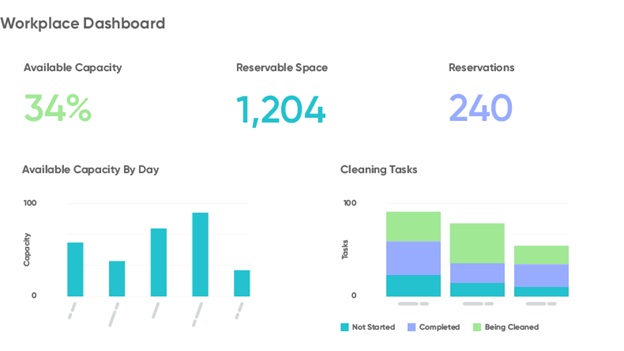Contact person
Liam Crampsey
Platform Consultant

Are you coming up on a lease renewal? Or do you have options in your existing one? You’ll need to get your arms around office space utilization to assess what (and if) you can downsize.
Global economic market conditions have a lot of businesses looking to cut costs. At the same time, employers are struggling to find and retain talent, and they’re being pressed to offer a different kind of working arrangement (flexible or remote).
While the pandemic might have been the catalyst for a shift in working arrangements, people have experienced a different way of work now, and it’s become a major factor in job satisfaction.
With the “great resignation” causing a war over talent, it’s undeniable that flexible work arrangements are an attractive draw for employees. In fact, A recent Robert Half survey found that half of professionals working from home would look for a new job if they were required to return to the office full time. So, if you don’t have a flexible work option in place, it’s definitely time to think about one.
Due to all of the above-mentioned circumstances, corporate real estate needs have already changed drastically, and it’s expected they’ll continue to change over the next year or so as companies figure out what to do now that it’s safe for employees to return to the office.
Corporate real estate is a huge expense line item, and if office space isn’t being effectively used, it should be addressed as soon as possible.
Why? The average company’s workspace amounts to the second largest overall expense and the single largest fixed cost it manages over time. Every square foot of office space also comes with additional operating expenses (heating, cooling, cleaning, lighting, insurance, etc.). It’s said that for every $100 million spent on real estate, most companies are spending an additional $40 million in operating costs—so any wasted space adds up to a lot of wasted spend.
Let’s talk about office space utilization, which is the measure of a building’s occupancy divided by its capacity. The average organization has 30-50% more real estate than it needs, according to a recent Accenture report.
That stat seems to align with another study’s findings on use of individual workspaces inside the office —a recent Herman Miller study revealed that 77% of the time private offices are unoccupied, and 60% of the time workstations are not occupied. So, I don’t think anyone would be surprised to learn that around 44% of companies expect to downsize their office footprint after the pandemic.
As mentioned above, office space is incredibly expensive, and in many cases, no longer being used in a way that can justify the significant cost. That’s why so many companies are looking for ways to reduce their office footprint.
Larger organizations are making moves to spare some of the expense, including United Airlines, who has dumped nearly 150,000 square feet of office space, and Salesforce, who is attempting to sublet 50 percent of its 450,000 square feet at 350 Mission Street in San Francisco.
Businesses—especially those coming up on a lease renewal—should carefully assess what space they truly need, and then figure out what to do with the space they don’t. While some organizations have gotten creative, options could include repurposing the space, exercising options in their lease agreements, subletting the space, or dumping it altogether.
Companies who use the ServiceNow platform may have a head start on this exercise. Organizations using ServiceNow’s Workplace Service Delivery Suite have a built-in tool to manage spaces and collect insights around office space utilization. These insights provide building managers the necessary data to assess what kind of space they actually need (or don’t need) right now, and in the future.
ServiceNow’s Workplace Service Delivery Suite provides two things to enable the exercise of downsizing a real estate footprint:
Workplace Service Delivery provides building (or facility) managers the tools and visibility to measure, define and maintain space lifecycles to plan for future, makeshift spaces, and changes to existing locations. Standard reporting features in WSD’s Reservation Management tool give you data to make informed decisions with, including:

So, if you have a way to collect these office space utilization insights, what’s next? When you look at the data points provided by ServiceNow Workplace Service Delivery, for example, here are some questions to weigh it against to steer decisions regarding corporate real estate needs:
Bottom line: office space is too expensive to sit empty. If you feel like you’re not utilizing the office space you currently have, or if you’re reassessing your overall space needs, ask Plat4mation how ServiceNow Workplace Service Delivery can help you better manage how space is used, and generate data for you to assess what space you actually need.


Sign up to our monthly Flow@Work Exclusive newsletter to get free access to our expertise and lots of tips and tricks to make work flow on the Now® Platform.